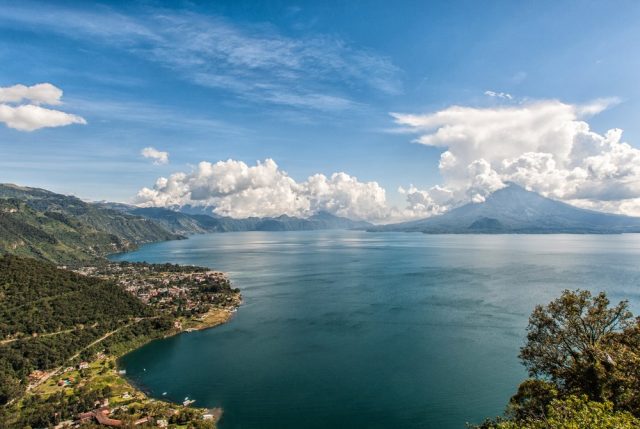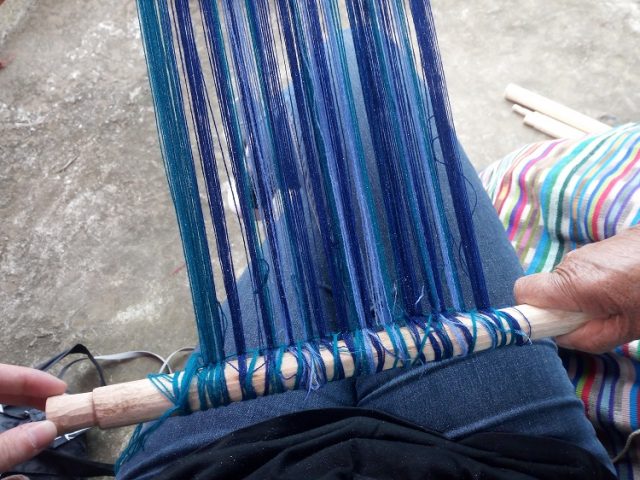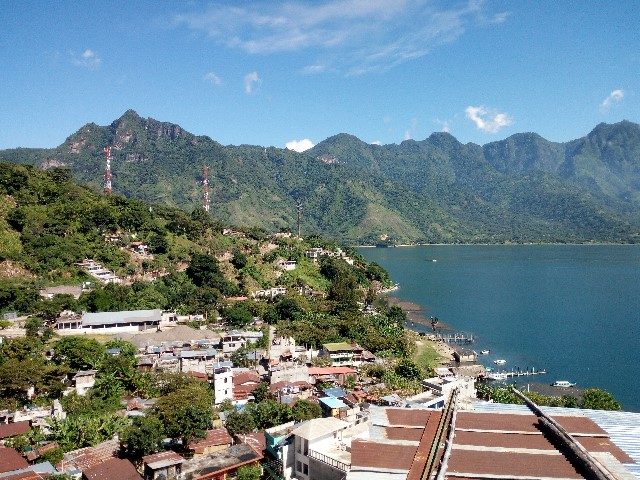 Joakim Lloyd Raboff
Joakim Lloyd Raboff
Central America’s largest and perhaps most diverse country has many dramatic spots that evoke a marked sense of place – the jawdropping ancient Mayan ruins of Tikal; the colonial splendour of Antigua; the castaway Caribbean vibe of Livingston; and many more. And around one of the world’s loveliest lakes (and at up to 340 metres/1,120 feet, Central America’s deepest), Lake Atitlán, its spectacular scenery – including cloud-wreathed volcanoes – is garnished by a marvelous sense of the modern Mayan culture’s spiritual and material roots.
Located in the highlands a 2½-hour drive from both Antigua and capital Guatemala City, Atitlán can be done as a day trip, but it really merits an overnight or more, to explore the eleven towns ringing the lake, linked by rustic water taxis.
Main town Panajachel (aka Pana, pop. around 15,000) is a magnet for expats, and San Pedro La Laguna packs in the backpackers (especially of the party-hard type). Santiago, meanwhile, is known for its quirky neo-Mayan cult of Maximón. More laid back, tiny and tranquil Santa Cruz reaches high into the mountains, and San Marcos has become a groovy hippy and favourite. Perhaps lowest key of all, Jaibalito has several small lodgings and a handful of expats along with several hundred Mayans who live quiet lives, and in even tinier San Juan La Laguna you can explore local coffee farms and traditional weaving cooperatives.
 Lauren Cocking
Lauren Cocking
And that brings me to my last visit, when I discovered a way into today’s Mayan culture that will especially appeal to hands-on and socially conscious travellers. Backstrap weaving (so called because the loom is a series of wooden slats and poles supported at one end by a tree or post, and at the other by the weaver’s body, with straps wrapped around her back) has been traditional from Mexico to Peru. But here in the Guatemalan highlands, tradition is strong – the tale goes that the art was taught to humans by the Mayan goddess of fertility Ixchel – and instead of graduating to faster, pedal-operated methods, local women proudly hew to the old ways.
Concretely, two identical wooden poles are positioned horizontally and parallel to each another before being joined together by a mesh of looped and multicoloured threads. One pole is attached securely to an elevated surface while the other is held in place by that all important backstrap, which provides tautness and effectively roots the weaver to the spot, sandwiched tightly between the strap and her soon-to-be creation. And the threads? They make up the warp, which is then laced with guiding threads, and wooden shuttles to manipulate them.
 Lauren Cocking
Lauren Cocking
You can give backstrap weaving a try at abbreviated one-day workshops, but on my last visit I decided to go deeping, sitting for four hours a day over three days with a 72-year-old Tz’utujil Mayan woman named Gudelia Cumes and one other student on her patio in San Pedro with nice views out over the lake and town (below). Over the course of these three days, in cobbling together a pair of admittedly rather rudimentary place mats, I also learned some of the town’s history before tourists and expats took over its shoreline and real estate, and got an interesting perspective on life along Lake Atitlán. We were even taken to see her son’s chocolate-making business.
In doing so, I mastered the art at sitting still for hours on end, getting used to doing so while actively weaving and being pinned in place was a learning curve of backache, leg cramps and overall satisfaction when things went right (even though plenty also went wrong). However, and though this is a craft which takes years to truly master, the mental checkout and relaxation I was rewarded with once you got into the rhythm made it all worthwhile. Don’t fret if you’re wondering how on earth you could possibly take part as a non-Spanish speaker, because Doña Gudelia is a master in the art of silent communication, and has even taught Japanese learners to weave successfully. For those who would like a little more chatting during their sessions though, there are plenty of alternatives which cater to non-Spanish speakers.
 Lauren Cocking
Lauren Cocking
On the whole, I found this a truly marvellous, intimate cultural experience, indeed. But I do recommend some research before choosing a class; they’re offered in practically every village, and some are obviously better than others. The two things to ask yourself prior to booking are:
– Who is getting my money? Is it the weaver or a middleman?
– How long does this workshop last? Am I actually going to have time properly try my hand at the technique?
You can find other programmes here and here, and if you’re interested in learning with Doña Gudelia, check out ArteMaya.com or email her English-speaking brother José.
More info on the area: Atitlan.com, AtitlanLiving.com.
Lauren Cocking is a travel and food writer specialising in Mexico, Latin America and all things colourful. You can find more of her work at Northern Lauren.

